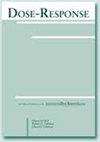无菌冻干片增强阿昔洛韦在自溶微针治疗皮肤上透性的可行性
IF 2.3
4区 医学
Q3 PHARMACOLOGY & PHARMACY
引用次数: 9
摘要
阿昔洛韦是一种抗病毒药物,经常被用于治疗疱疹病毒。然而,由于生物利用度有限(10-26.7%),该药物需要频繁给药。本研究的基本原理是开发一种自溶微针系统,用于局部和全身递送阿昔洛韦,使用微针治疗皮肤上的局部冻干晶片在感染部位提供药物。用羟丙基甲基纤维素(HPMC)(8%w/w)或HPMC(8%w/w)-聚乙烯吡咯烷酮(PVP)(30%w/w)制备的微针穿透切除的大鼠皮肤,显示出足够的机械强度和快速的聚合物溶解。用阿昔洛韦(40%w/w;相当于200mg的药物)、明胶(10%w/w)、甘露醇(5%w/w)和氯化钠(5%w/w)制备局部晶片。通过差示扫描量热法(DSC)和热重分析(TGA)证实了无定形形式的阿昔洛韦在晶片内的均匀分布。根据傅立叶变换红外光谱(FTIR)分析,在冻干晶片中没有明显的聚合物-药物相互作用。根据扫描电子显微镜(SEM)分析,晶片显示出用于快速水合的足够多孔的结构。在离体分析过程中,用自溶性微针阵列预处理皮肤5分钟,并将晶片放置在该微孔皮肤上。局部晶圆提供的皮肤浓度是ID99的7-11倍,滞后时间较低。根据体内测试,在24小时的研究中,兔血浆中的Cmax达到了~2.58µg/ml。我们的研究结果表明,首次提出的自溶解微针辅助局部晶圆将对存在于皮肤层的感染和全身治疗有效。本文章由计算机程序翻译,如有差异,请以英文原文为准。
Feasibility of Enhancing Skin Permeability of Acyclovir through Sterile Topical Lyophilized Wafer on Self-Dissolving Microneedle-Treated Skin
Acyclovir is an antiviral drug that is frequently prescribed for the herpes virus. However, the drug requires frequent dosing due to limited bioavailability (10–26.7%). The rationale of the present study was to develop a self-dissolving microneedle system for local and systemic delivery of acyclovir using a topical lyophilized wafer on microneedle-treated skin to provide the drug at the site of infection. The microneedles prepared with hydroxypropyl methylcellulose (HPMC) (8% w/w) or HPMC (8% w/w)-polyvinyl pyrrolidone (PVP) (30% w/w) penetrated excised rat skin, showing sufficient mechanical strength and rapid polymer dissolution. The topical wafer was prepared with acyclovir (40% w/w; equivalent to 200 mg of drug), gelatin (10% w/w), mannitol (5% w/w), and sodium chloride (5% w/w). The uniform distribution of acyclovir within the wafer in an amorphous form was confirmed by differential scanning calorimetry (DSC) and thermogravimetric analysis (TGA). No polymer–drug interaction was evident in the lyophilized wafer as per Fourier transform infrared spectroscopy (FTIR) analysis. The wafer showed a sufficiently porous structure for rapid hydration as per scanning electron microscopy (SEM) analysis. During ex-vivo analysis, the skin was pre-treated with a self-dissolving microneedle array for 5 minutes, and the wafer was placed on this microporated-skin. Topical wafer provided ∼7–11 times higher skin concentration than the ID99 reported with a lower lag-time. Based on in-vivo testing, ∼2.58 µg/ml of Cmax was achieved in rabbit plasma during 24 hours’ study. Our findings suggest that the self-dissolving microneedle-assisted topical wafer, proposed for the first time, would be efficacious against the infection residing in the skin layer and for systemic therapy.
求助全文
通过发布文献求助,成功后即可免费获取论文全文。
去求助
来源期刊

Dose-Response
PHARMACOLOGY & PHARMACY-RADIOLOGY, NUCLEAR MEDICINE & MEDICAL IMAGING
CiteScore
4.90
自引率
4.00%
发文量
140
审稿时长
>12 weeks
期刊介绍:
Dose-Response is an open access peer-reviewed online journal publishing original findings and commentaries on the occurrence of dose-response relationships across a broad range of disciplines. Particular interest focuses on experimental evidence providing mechanistic understanding of nonlinear dose-response relationships.
 求助内容:
求助内容: 应助结果提醒方式:
应助结果提醒方式:


